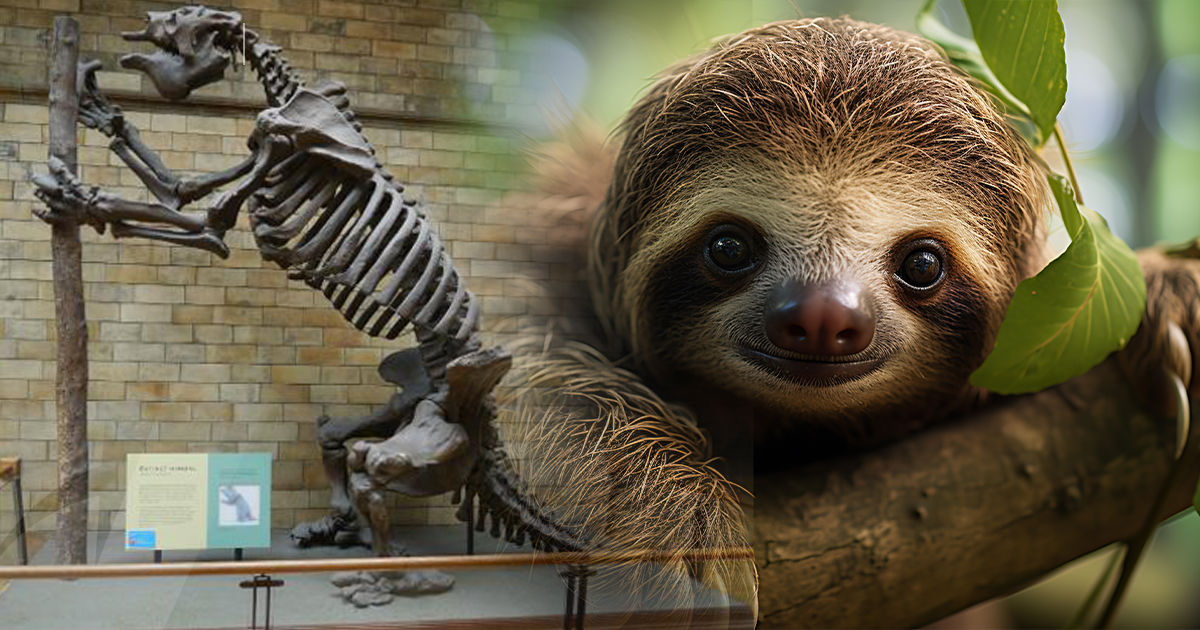Thai PBS Verify has come across images of massive tunnels and the skeleton of an animal larger than a human, which have gained attention on the Facebook page “The Secret Chamber.” The post claims that these tunnels were dug by giant sloths in Brazil over 10,000 years ago. The post has garnered interest from over 3,400 people and has been shared 124 times.
Source: Facebook

The Facebook page “The Secret Chamber” explains that the tunnels were dug by giant ground sloths in Brazil over 10,000 years ago.
Known as Paleoburrows, these enormous tunnels can stretch up to 2,000 feet long and stand over six feet high. It is believed that these Brazilian tunnels were created by giant ground sloths.
In the early 2000s, Professor Heinrich Frank from Rio Grande do Sul Federal University, a strange hole exposed by excavation equipment.
Curious about where it led, he returned a few weeks later and crawled 15 feet into the tunnel. Inside, he noticed claw marks on the cave ceiling. Using his expertise, he concluded that no natural geological process could have formed these tunnels. They had to be the work of a large animal.
The most likely culprit was a species known as Megatherium, an extinct group of giant ground sloths native to South America.
Verification process
A reverse image search and keyword search on Google conducted by Thai PBS Verify found that the information had previously been published on foreign websites. The website “extinct animals,” which provides knowledge about extinct creatures, had posted details about this animal on March 28, 2022, stating that the skeleton belonged to a species called “Megatherium” or Giant Ground Sloth. This genus of ground sloth was as large as a rhinoceros (unlike the tiny tree sloths seen today). It was native to South America but later migrated and spread throughout North America.Megatherium was a large, herbivorous mammal covered in fur, having lived for approximately 5.3 million years before becoming extinct around 10,000 years ago.

History & Discovery
In 1796, the first Megatherium fossil was discovered by French anatomist Georges Cuvier, known as the “Father of Paleontology.” He identified it as an ancient species of sloth.
The oldest known Megatherium fossils date back around 5.4 million years. However, the most well-known species, Megatherium americanum, evolved later during the Pleistocene epoch, approximately 1.8 million years ago.
According to the Illinois State Museum, fossils from at least 150 different sites across North America have been excavated.
Physical Characteristics
These giant creatures were land-dwelling and had physical characteristics adapted to a terrestrial lifestyle, which differed from the six species of small tree sloths that exist today. However, an interesting fact is that these sloths were only the ancestors of modern sloths, which weigh less than 20 pounds. They had narrow, low skulls with relatively small brain mass.

Among all species, Megalonyx jeffersonii was the largest, reaching the size of a fully grown cow. Meanwhile, Megatherium americanum belonged to the same group of giant ground sloths. These creatures had short legs and long arms, with their entire bodies covered in yellowish fur. They had blunt skulls and rows of teeth, which were well-suited for chewing leaves and plants, indicating a strictly herbivorous diet.
They also possessed large claws, which were used for both self-defense and pulling down tree branches. Additionally, they may have had long tongues, similar to modern sloths, to help them grasp and consume vegetation.
Extinction
The exact cause of Megatherium’s extinction remains unknown. However, it is believed that humans, who coexisted with these creatures, were the primary predators responsible for their extinction 10,000 years ago. Early humans likely hunted Megatherium for food.
The images from this viral post have also been shared on other websites, including here and here
Original Source Link: https://www.thaipbs.or.th/now/content/1955




